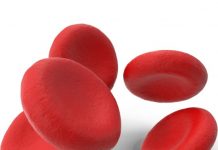Clotting and bleeding disorders can affect people irrespective of gender. However, there are blood diseases which uniquely affect women. This is because these blood disorders have an impact on the reproductive system and in turn affect their health and also their quality of life. Recent researches have estimated that these rare blood diseases in women affect nearly 1% of the global population. Large numbers of women suffer from these disorders but are specifically unaware of the conditions.

Types of Rare Blood Disorders
Von Willebrand Disease (VWD)
Von Willebrand Disease (VWD) is the most commonly occurring rare disease that affects women. It is a result ofthe body’sinability to produce a specific type of protein which helps the blood to coagulate and clot. Women have a greater chance of noticing these symptoms because of heavy and abnormal bleeding during their menstrual cycle and also after giving birth.
Diseases such as this can also lead to repeated occurrences of foetal loss in women, heavy bleeding during any kind of medical and surgical procedures and even heavy bleeding from the nose.
Menstrual Bleeding or Menorrhagia
Menstrual Bleeding or Menorrhagiais a condition when women suffer from heavy bleeding and lack of clotting in blood. Women suffering from these diseases face a major risk of anaemia, pain during menstrual cycle, and also limited daily activities. This results in reduced quality of their life.
Thrombotic Thrombocytopenic Purpura is a rare blood coagulation disorder which causes extensive number of clots to form in the blood vessels. These blood clots formed throughout the blood are called thromboses. They can damage various organs of the body like kidney, brain and also the heart. It is a dysfunction which is usually genetically inherited.
These blood clots damage the membranes of the organs and blood vessels which can lead to internal haemorrhage called hemolysis and also forms schistocytes. Thrombosis results in reduced flow of blood which causes injury in the cells and ultimately destroys organs in the body. Treatment of this disease is done by circulating antibodies which are injected externally through medical procedures.
Other than the above mentioned diseases there are the blood platelet disorders as well. The responsible factor for bleeding problems in women is the common blood platelet function disorder. There are no specific cures for such rare blood disorders which are mostly common in women. However there are probable treatments to control and prevent symptoms to avoid complications and other invasive medical procedures like surgery













